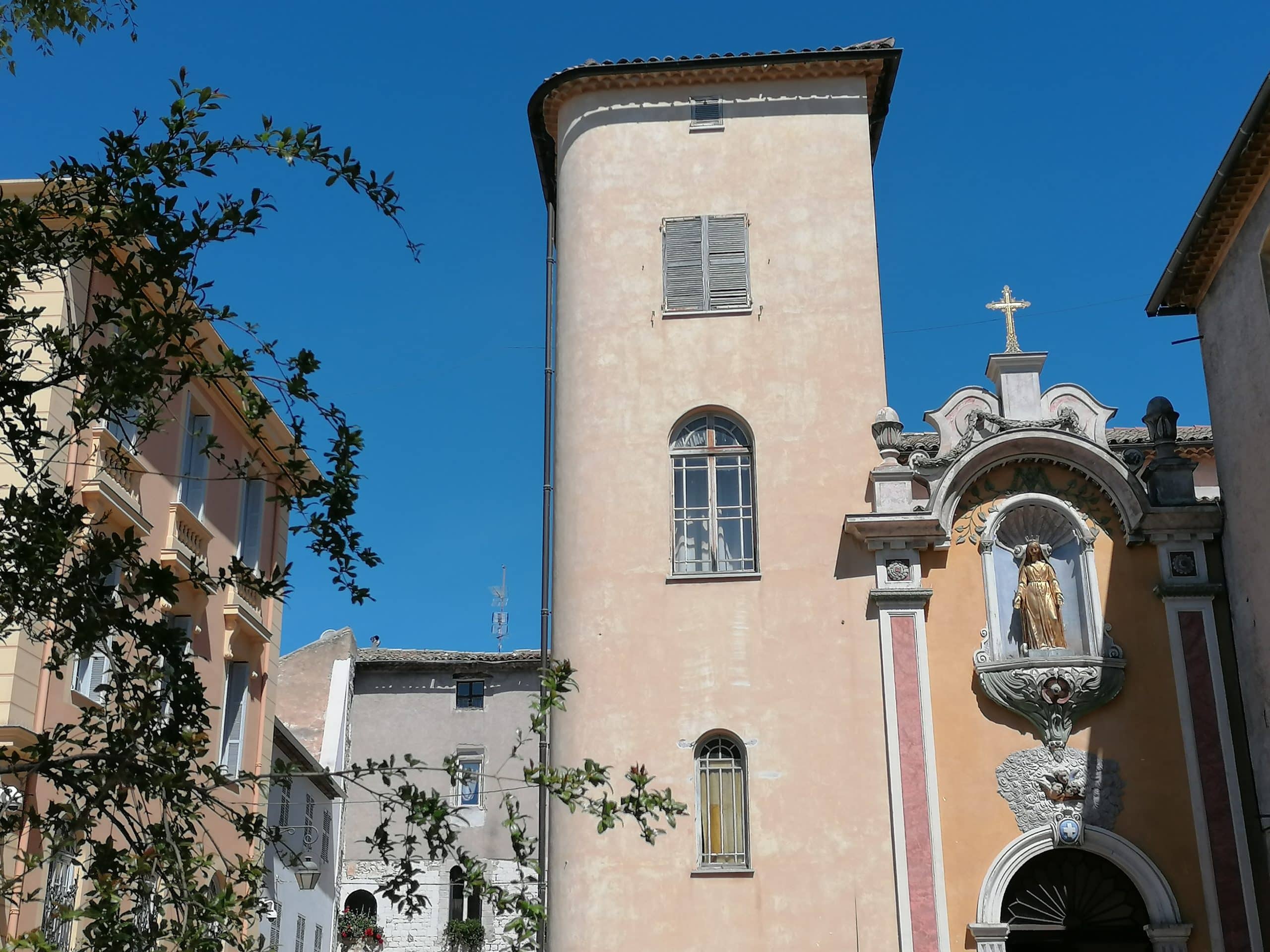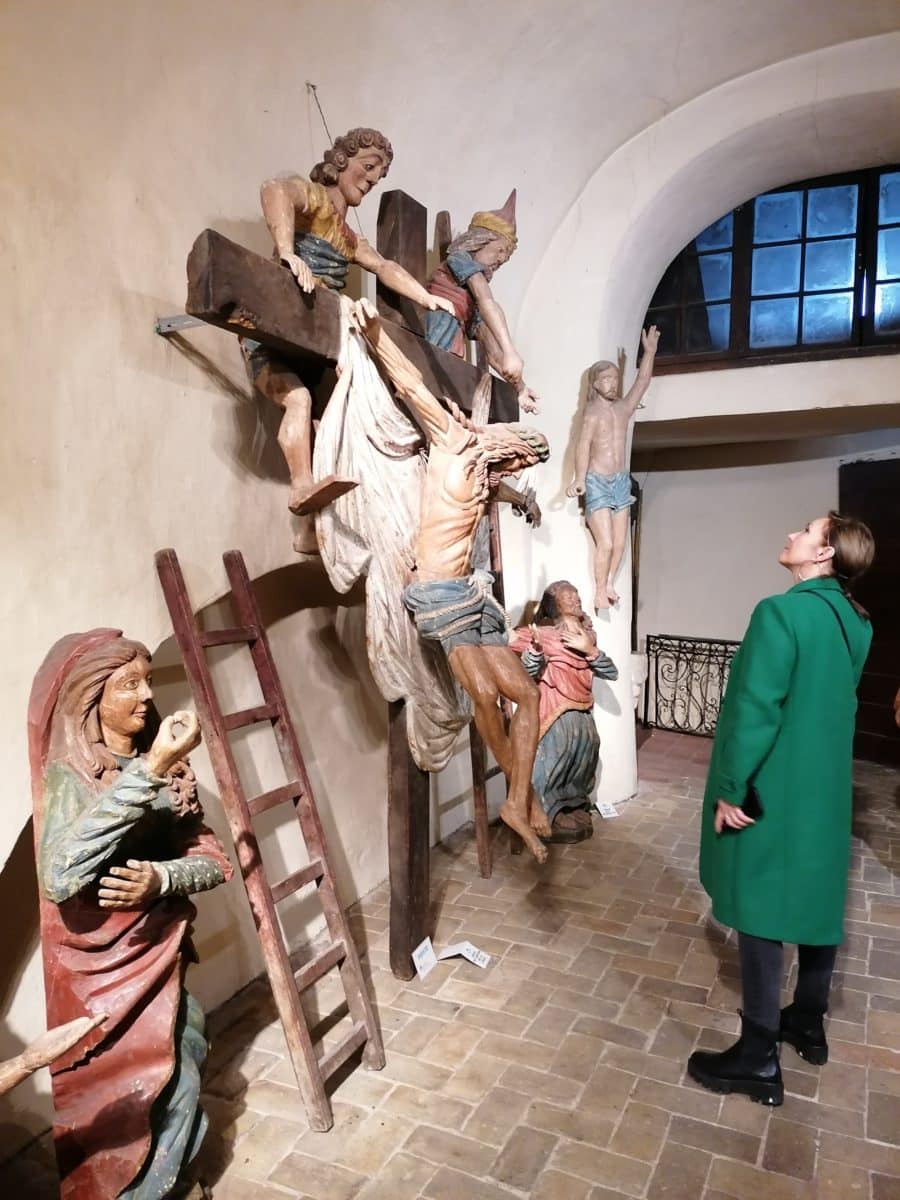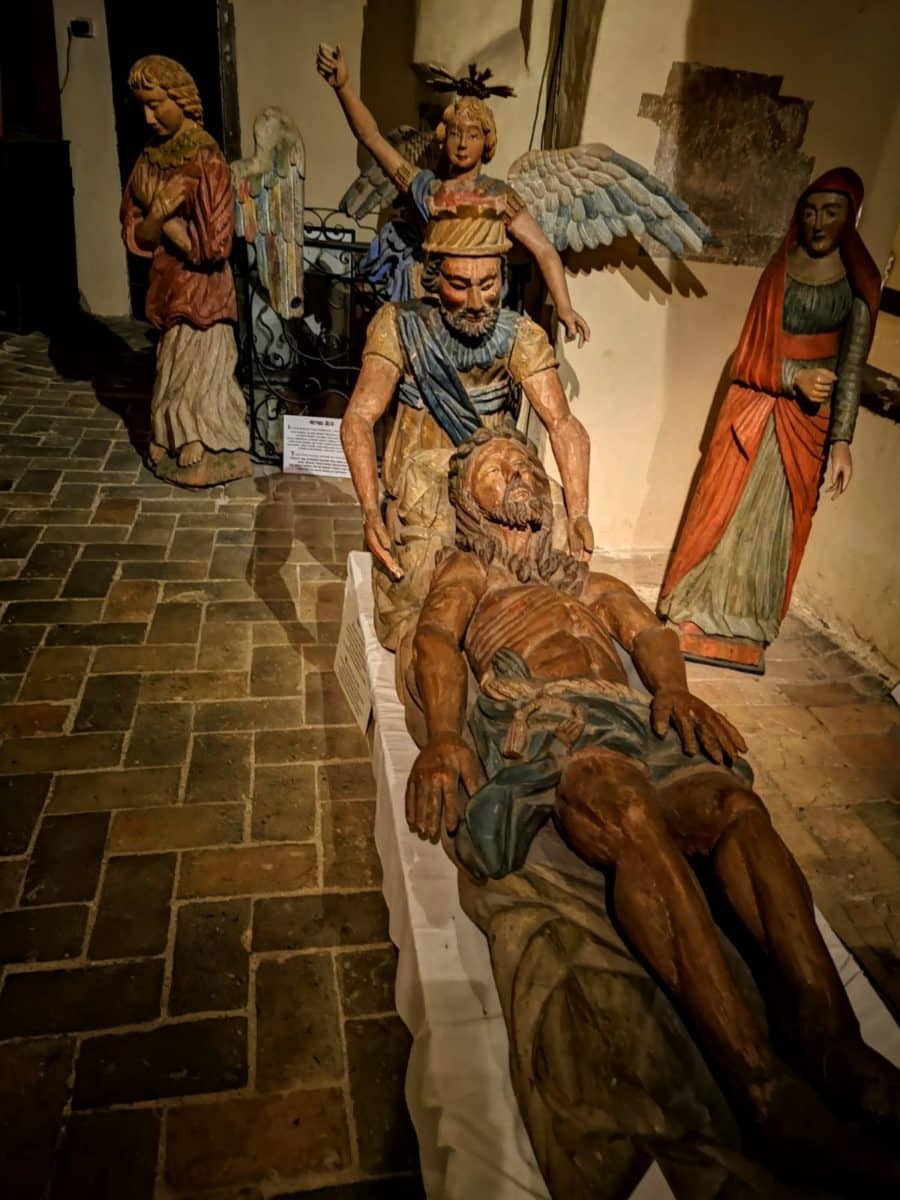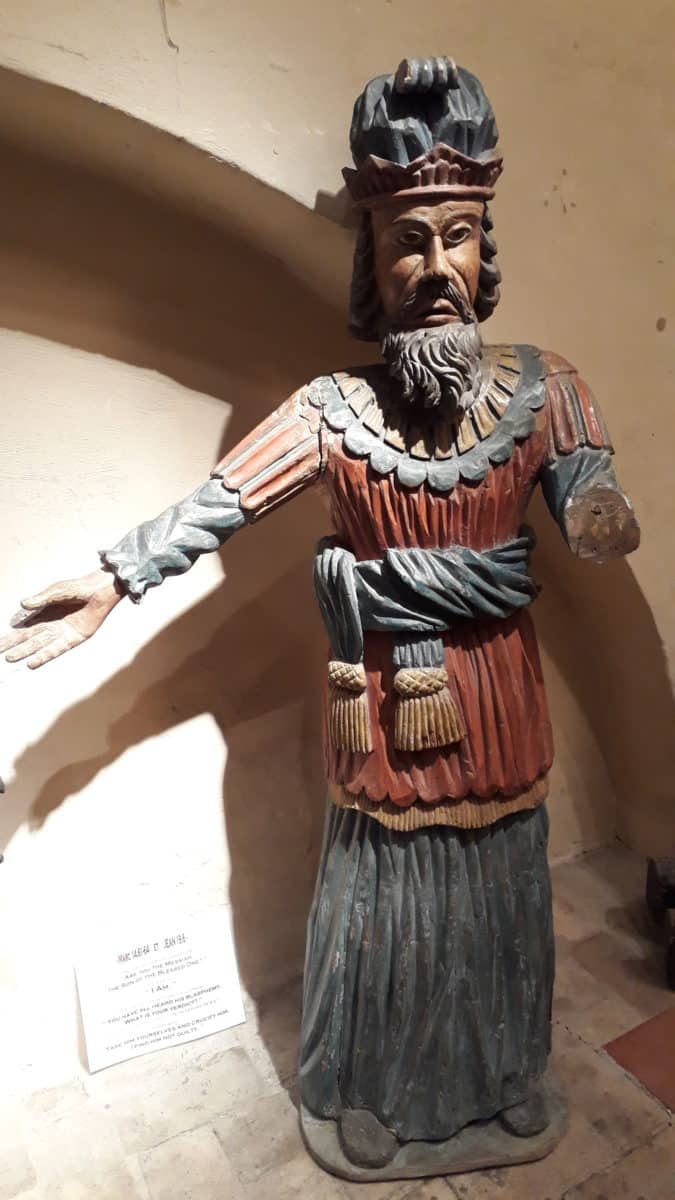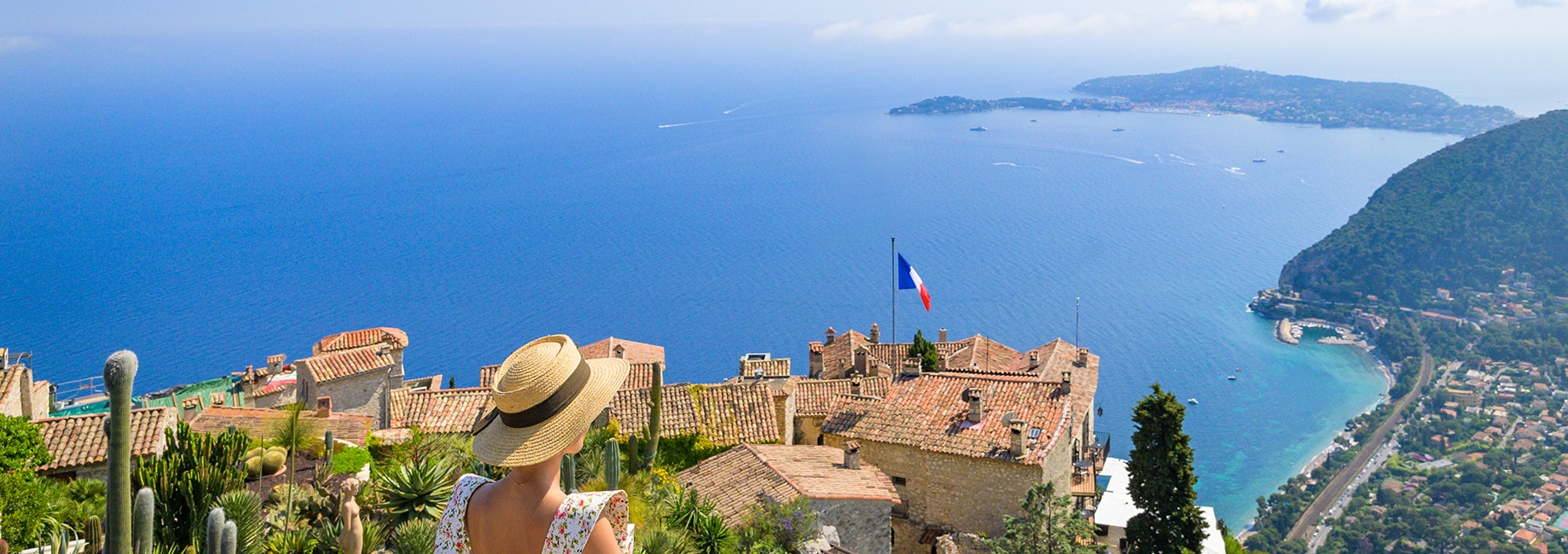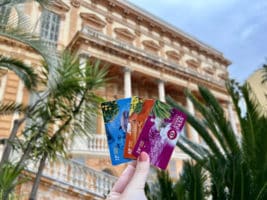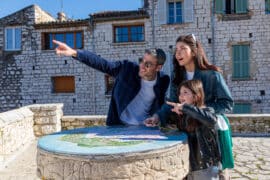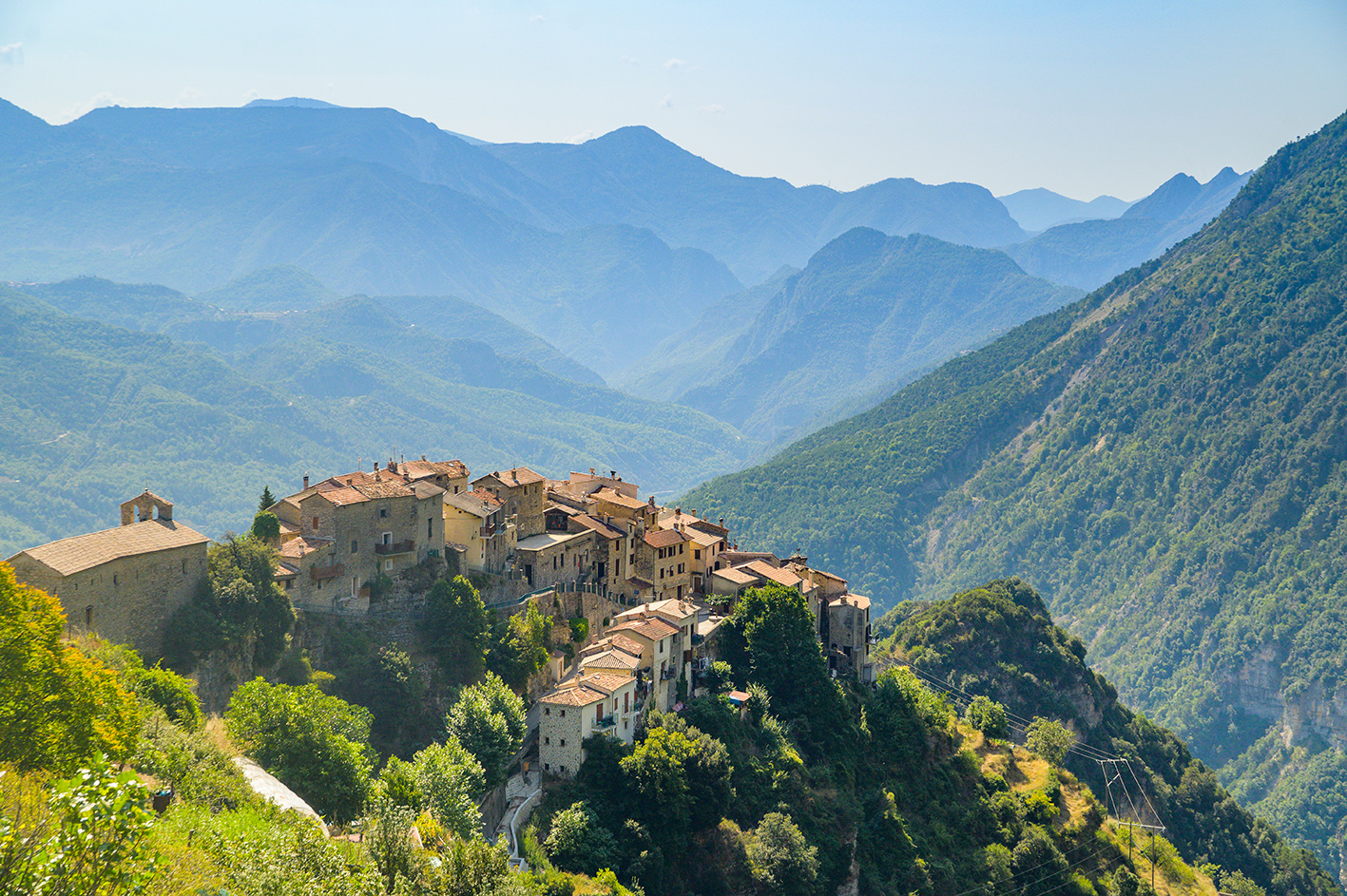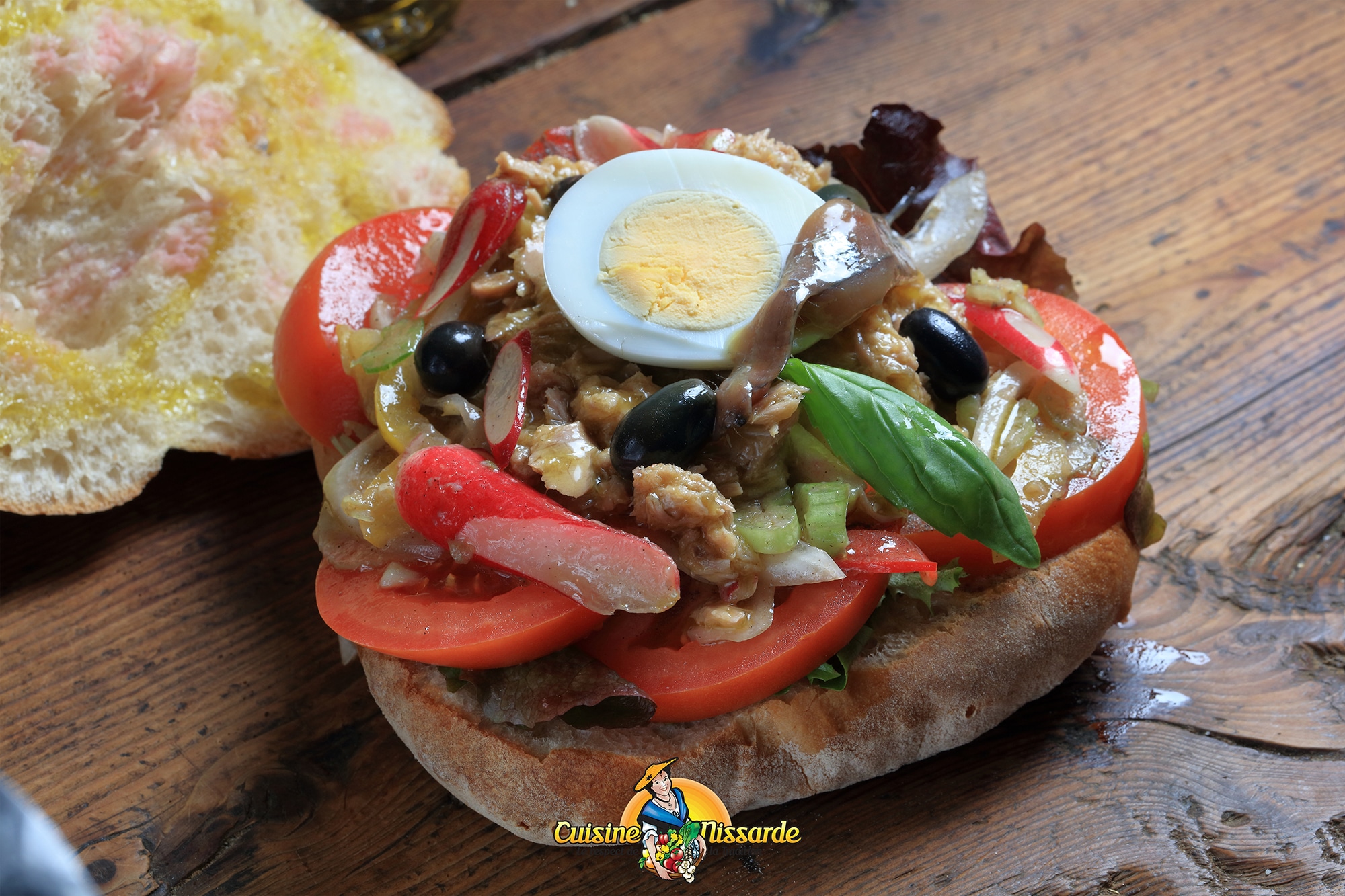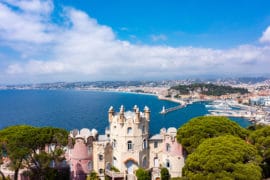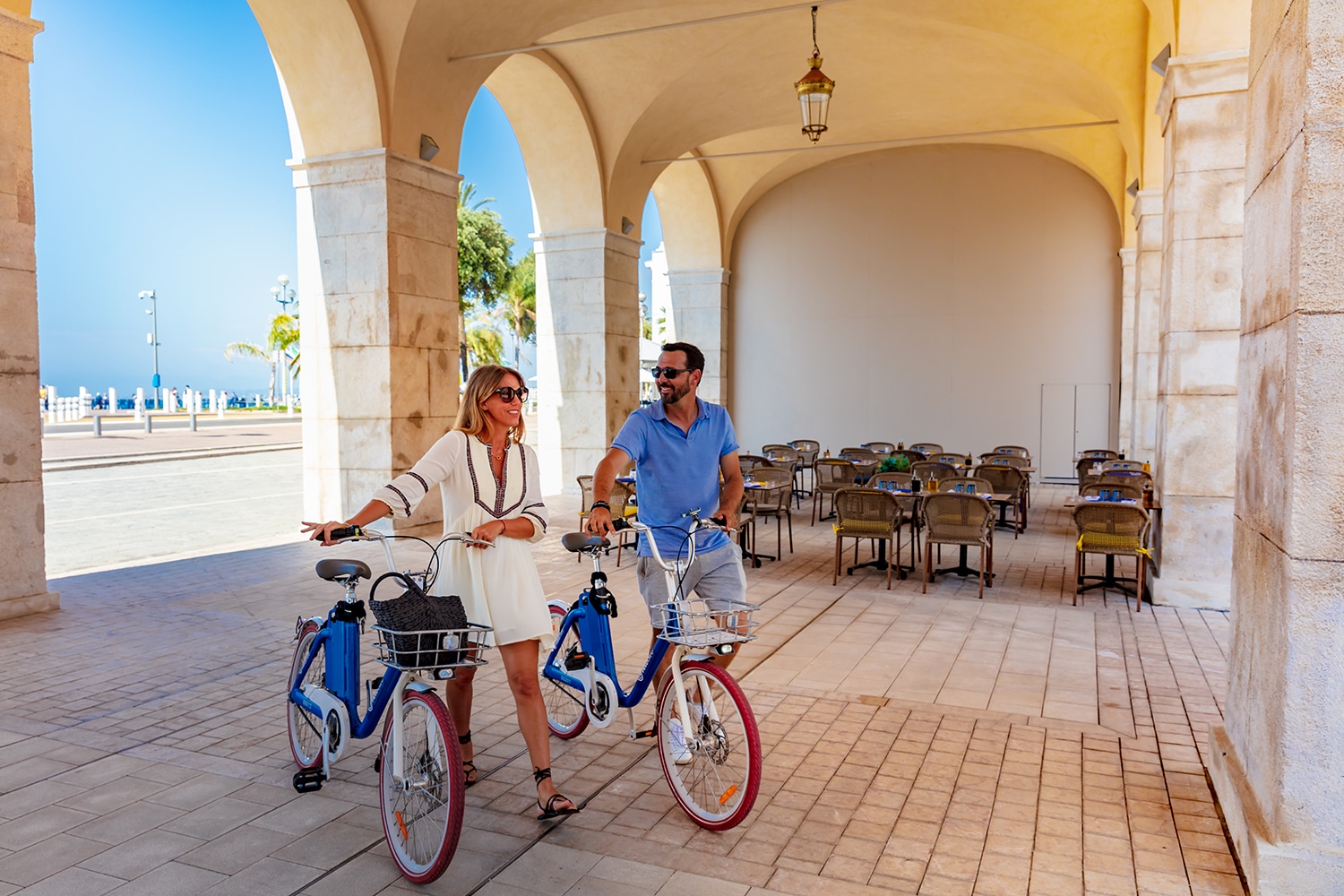The Cathedral of Our Lady of the Nativity – Vence
On the road to Vence
Sitting in the bus, I gaze out of the window at the landscape as the road zigzags through the hills. The dark ravines, alternating with the sunnier slopes covered in mimosa trees, add a unique dimension to the view until I finally catch sight of the town of Vence in the distance.
The further the bus goes, the more excited I am at the prospect of discovering this town that I’ve heard so much about for its charm and artistic history. I can’t wait to soak up the unique atmosphere of this place and discover the wonders it has to offer.
The Cathedral of Our Lady of the Nativity
Among all the marvels I was able to discover, one in particular captivated my attention: the Cathedral of Notre-Dame de la Nativité, which was listed as a historic monument in 1944 and is located in the heart of the village of Vence, right next to the Town Hall. This cathedral is also known for being the smallest in France. Indeed, from the outside, it doesn’t seem to correspond to the image that many of us, myself included, have of what a cathedral is. But let me tell you a little more about it.
A cathedral like no other
When we arrived at the entrance to the cathedral, Mr Jacques Chave, president of the association Patrimoine Religieux Vençois, warmly welcomed us and kindly guided us on our tour. He told us all about the fascinating history of this building, and added a few interesting anecdotes that I’d like to share with you.
First of all, he answered the question on everyone’s mind: how is it possible for such a small church to be a cathedral?
Mr Chave explained that cathedral status is not determined by the size, opulence or style of a church, but by the presence of the cathedra (from the Latin cathedra, meaning “seat”) of the bishop. These churches are commonly called cathedrals because they serve as the central place of worship for a diocese or episcopate.
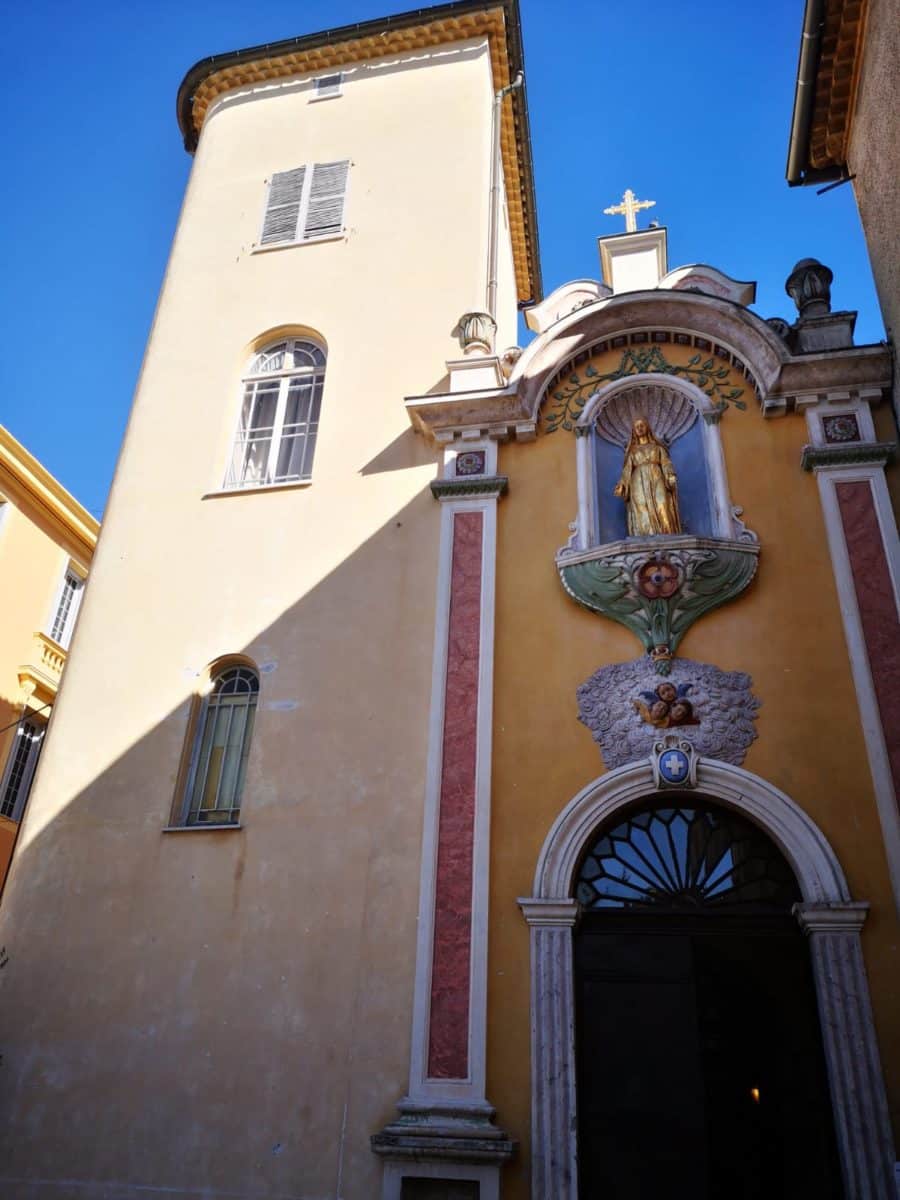
Centuries of history
The cathedral, built from the Romanesque period on the presumed site of an ancient Roman temple dedicated to Mars and Cybele, seems to have brought together a variety of elements from every century: stones with Carolingian decoration, Romanesque naves, a Baroque altarpiece and a neo-Rococo façade from the 19th century. Behind this eclectic ensemble lie some real treasures. Let’s discover them.
The “Moses saved from the waters” mosaic by Marc Chagall
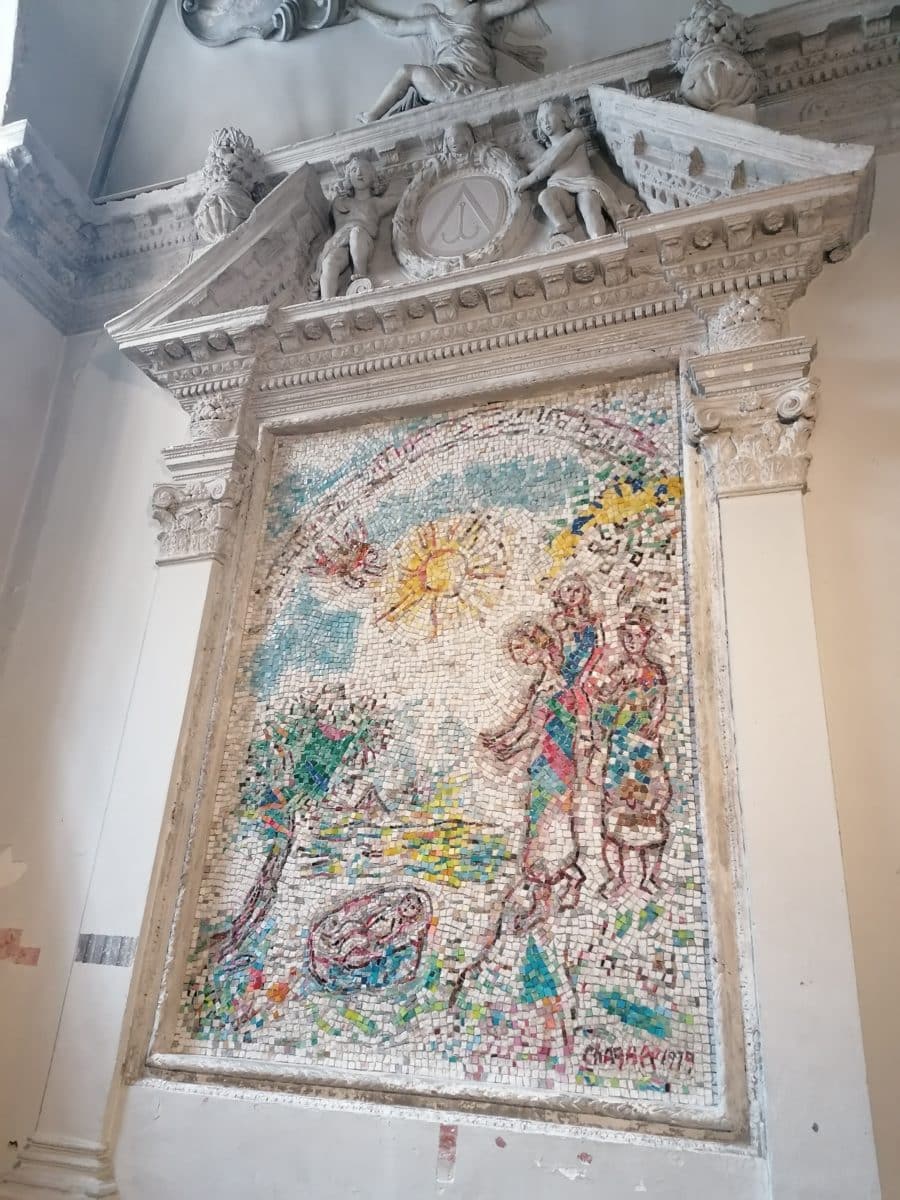
Our tour of the cathedral begins in the baptistery, which is decorated with the famous mosaic entitled “Moses Saved from the Waters”, created by Marc Chagall in 1979.
Chagall lived in Vence from 1950 to 1966, during which time he created most of the biblical paintings that are now on display at the Musée national Marc Chagall in Nice. Many years after leaving Vence, he returned to express his gratitude by offering this magnificent mosaic to the town.
The craftsmanship of this work of art is breathtaking, with its vivid colours, intricate detail and profound symbolism. I am convinced that this work of art is not just a mosaic, but a true invitation to contemplation and meditation. If you look at it carefully, you can lose yourself in its symbolism and beauty, making it a real jewel in our cultural heritage.
Popular devotion
As we continued our tour of Vence cathedral, I was fascinated by the town’s history, which is closely linked to that of its patron saints, Saint-Véran and Saint-Lambert. These two religious figures have left their mark on the identity and character of Vence, and their influence can still be felt today.
Legend has it that Saint-Véran saved the town from destruction during the Visigoth invasion. His heroic deeds have earned him a place of honour inside Vence cathedral, where you can find gilded wooden representations of him and his tomb built into an altar. Jacques Chave, president of the association Patrimoine Religieux Vençois, pointed out a small hole in Saint-Véran’s tomb.
What could it have been used for? This hole, he explained, was used by devotees and pilgrims in centuries gone by to pass a cloth-covered stick through it in order to be able to touch the saint’s remains and thus obtain a relic. This tradition bears witness to the fervour and devotion that Saint-Véran aroused among his followers.
The Treasure
The stalls
Our guide then takes us upstairs to discover the jewel in the crown: the cathedral’s ‘treasury’. Among the many treasures and relics are the famous carved wooden stalls, considered to be one of the church’s most precious possessions.
Once located in the choir of the cathedral, the stalls were used to gather the chapter around the bishop for major ceremonies.
Today, they are located in the gallery above the nave and offer an impressive spectacle for visitors. Created by Jacques Bellot, a carpenter from Grasse, in 1455, I was surprised to find them in such good condition despite their venerable age.
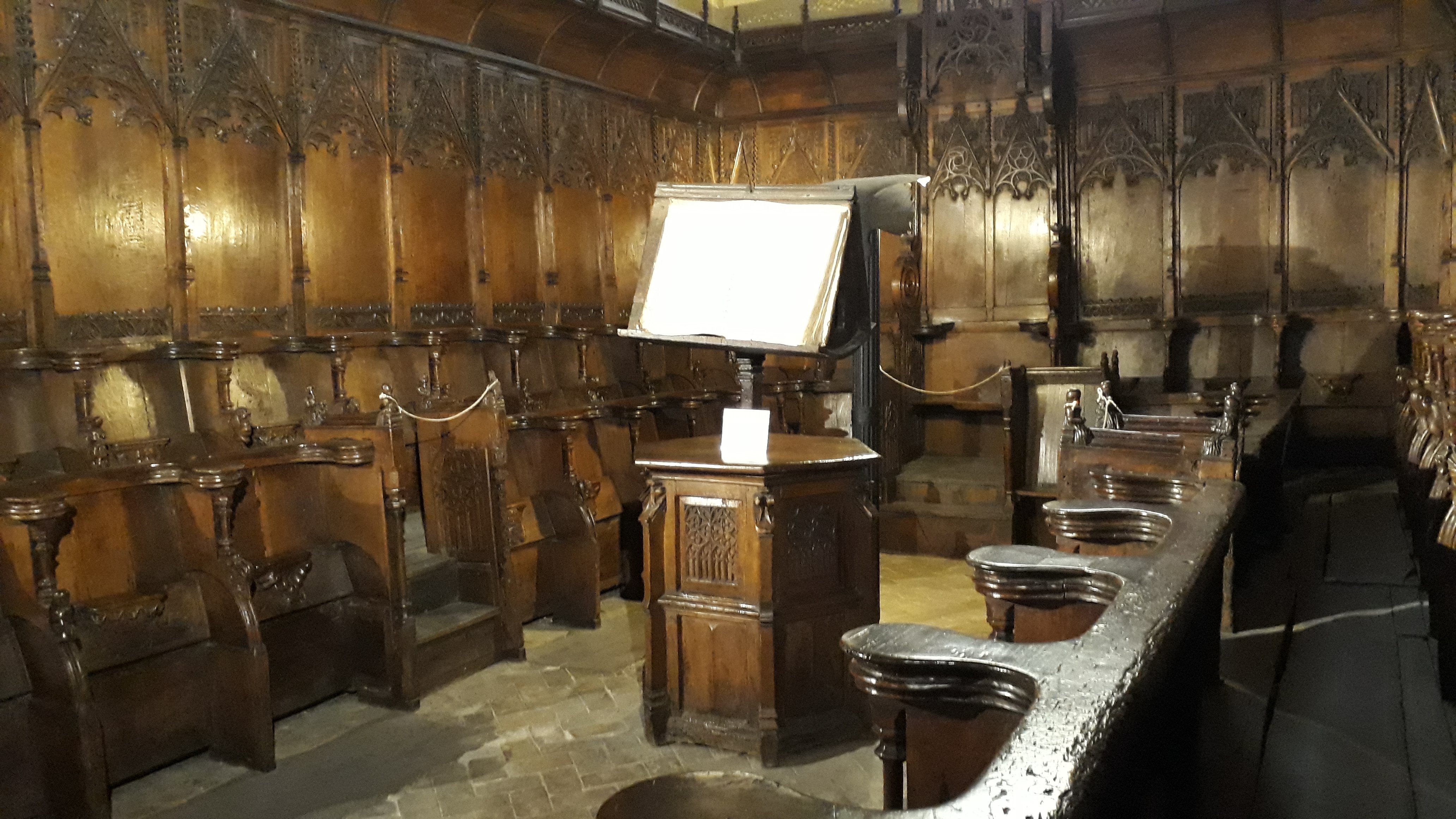
The first floor of the cathedral also contains another treasure that left me speechless: a magnificent collection of 50 polychrome wooden statues depicting the different stages of the Stations of the Cross. These pieces date from the 16th to the 19th century and are, in my opinion, one of the church’s most touching treasures. As soon as I saw them, I was immediately impressed by their size, measuring around 1.5 metres in height. But it was above all the expressiveness of these statues that struck me. Although they were created by local artists with no experience of statuary art, they bear witness to the great fervour and piety of the people of the time.
The treasure room
Once you leave the section of wooden stalls and statues in Vence Cathedral, you enter a small room called the ‘Treasure Room’, which contains some of the cathedral’s most astonishing objects. The collection of silverware is impressive, but it was the collection of 17th and 18th century dioramas that fascinated me the most.
These dioramas, also known as “crèches” in Provence, are large boxes containing richly decorated religious scenes, protected by glass. This forgotten art, once practised in convents, is depicted in these dioramas with clay figures, against a background of a Provençal village carved from cork and decorated with wild Provençal herbs.
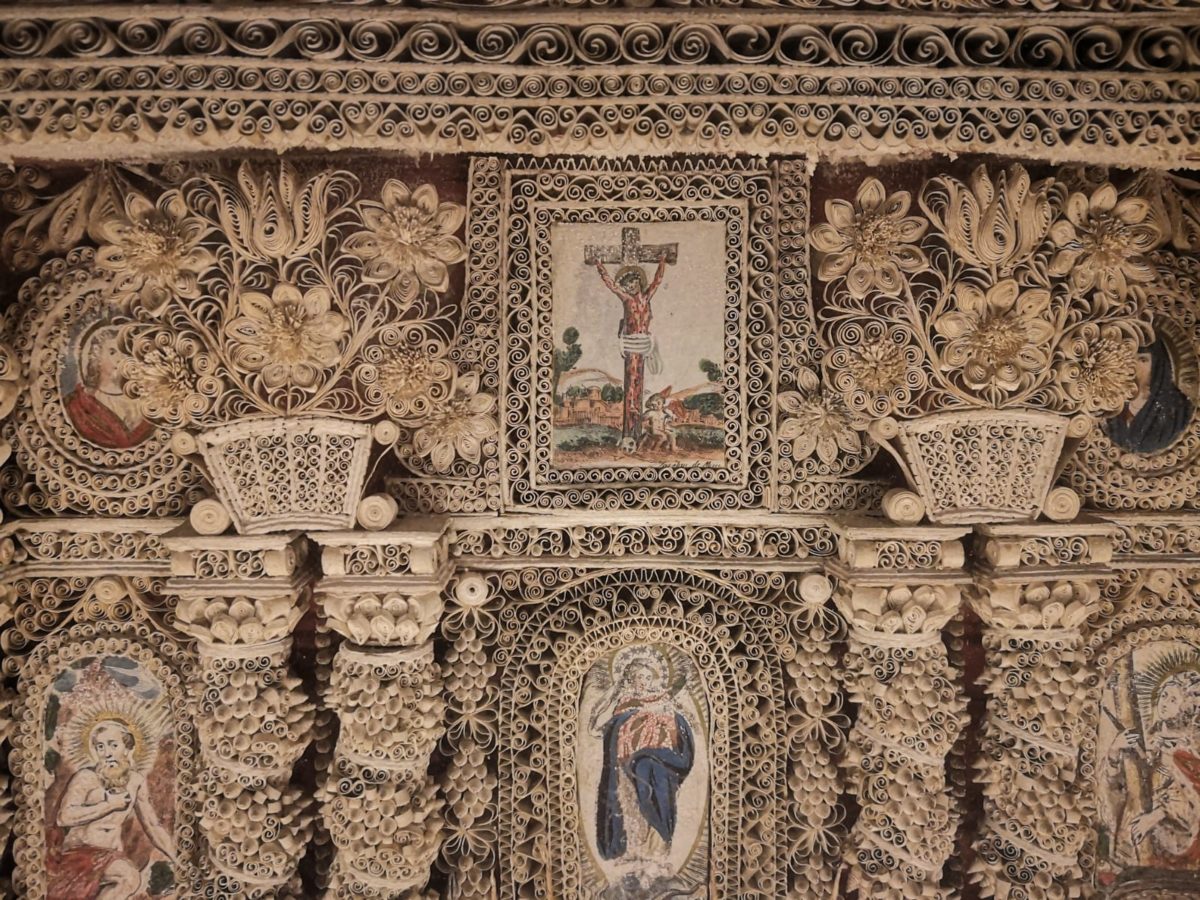
They include scenes such as the Flight into Egypt and the Annunciation with the Angel Gabriel. These works were created by the sisters using paperolles, tiny rolled pieces of paper. The richness and precision of the details in these dioramas left me speechless and transported me into a world of faith and creativity. In conclusion, the visit to Vence Cathedral allowed me to discover the fascinating history and incredible treasures of this magnificent church.
From the magnificence of the carved wooden stalls to the rich collection of silverware and paperolles, not forgetting the incredible mosaic by Chagall, every piece in this cathedral bears witness to the importance of religion in the life of the local community, as well as to the cultural and artistic wealth of the region.
This visit will certainly remain engraved in my memory as an unforgettable experience, and I would urge anyone who has the opportunity to go to Vence not to miss a visit to this magnificent cathedral.


